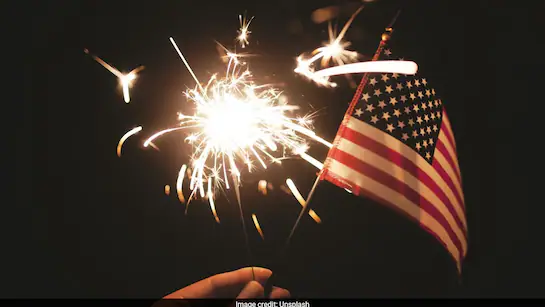
🇺🇸🪔 Bridging Cultures: A Celebration of Freedom and Identity
The 4th of July, America’s Independence Day, is a time of fireworks, family gatherings, and national pride. But for the over 4.8 million Indian-Americans living in the U.S., it’s also a moment of dual identity—where they proudly wave the Stars and Stripes while staying rooted in their Indian heritage.
In 2025, Indian-Americans participated in grand parades, hosted patriotic-themed yoga sessions, organized flag hoistings at temples, and lit up the sky with fireworks from coast to coast. Here’s how they uniquely celebrated this year’s Fourth of July across the United States.
🎆 Celebrations Across Major U.S. Cities
📍 New York City: Desi Vibes at Times Square
The heart of Manhattan saw hundreds of Indian-Americans gather for a cultural flash mob organized by the Federation of Indian Associations (FIA). Dancers dressed in traditional attire performed to a fusion of Bollywood and American patriotic tunes.
- Live screening of “Kalki 2898 AD” with American subtitles at AMC Lincoln Square drew in both communities.
- Local Indian restaurants served tricolor-themed desserts and “Red, White & Rasgulla” plates.
📍 San Francisco Bay Area: Tech Meets Tradition
In Silicon Valley, Indian tech professionals turned community parks into culture zones, blending barbecues with bhajans. Major celebrations included:
- A flag hoisting ceremony at the Livermore Shiva-Vishnu Temple.
- “Freedom Yoga” sessions with sun salutations facing both U.S. and Indian flags.
- Fireworks at Fremont’s Lake Elizabeth, where Indian food trucks offered dosas and chai alongside burgers and Coke.
📍 Houston, Texas: Parade Power
In Houston, which hosts one of the largest Indian populations in the U.S. South, the Indian-American community joined the official Independence Day parade, featuring:
- Floats with images of Mahatma Gandhi and Dr. Martin Luther King Jr. symbolizing global unity.
- Kuchipudi and Bhangra performances celebrating cross-cultural fusion.
- Indian-origin city council members giving speeches on inclusion and immigration.
🎓 Student Celebrations Across U.S. Universities
Many Indian students in U.S. universities celebrated July 4th with:
- Community dinners organized by Indian Student Associations.
- Independence Day-themed cricket tournaments and Bollywood DJ nights.
- Engaging in local events to show solidarity with American peers while proudly representing India.
At MIT, a student group hosted a panel titled “From Jallianwala Bagh to Juneteenth: Parallel Struggles for Freedom” — linking India’s colonial history to U.S. civil rights.
🛍️ Desi Businesses and 4th of July Sales
Indian-owned businesses made the most of the holiday with patriotic promotions:
- Jewelry stores in Edison, NJ offered 47% off (symbolizing India’s independence in 1947).
- Indian grocery chains like Patel Brothers ran “Freedom Week” discounts on spices, snacks, and sweets.
- Many Indian restaurants launched fusion menus—like “Tandoori Hot Dogs” and “Masala Mac and Cheese.”
🌐 Celebrating Online: Social Media Buzz
Indian-Americans flooded social media platforms like X (formerly Twitter), Instagram, and Threads with hashtags like:
#DesiFourth#FreedomFusion#ProudIndianAmerican
Influencers shared videos combining the Indian and American national anthems, or doing the “Bharat-to-Boston” dance trend, which went viral on Reels.
🧠 Why This Matters: A Growing Voice in America
The 4th of July isn’t just a celebration of American independence—it’s a reminder of how immigrant communities, like Indian-Americans, shape the nation’s identity.
Did You Know?
- 5 Indian-Americans serve in the U.S. Congress as of 2025.
- Indian-origin CEOs lead major American companies like Google (Sundar Pichai), Microsoft (Satya Nadella), and Adobe (Shantanu Narayen).
- Vice President Kamala Harris, of Indian heritage, made a special mention in her 4th of July speech about “immigrants enriching the American dream.”
🏁 Final Thoughts
The 4th of July 2025 celebrations by Indian-Americans were more than just patriotic—they were symbolic of integration without assimilation. With dance, food, culture, and unity, the community proved that they are not just living in America—but helping shape its future.
As generations grow up celebrating both India’s 15th August and America’s 4th July, a new multicultural legacy is being written—one where freedom, identity, and diversity thrive together.
